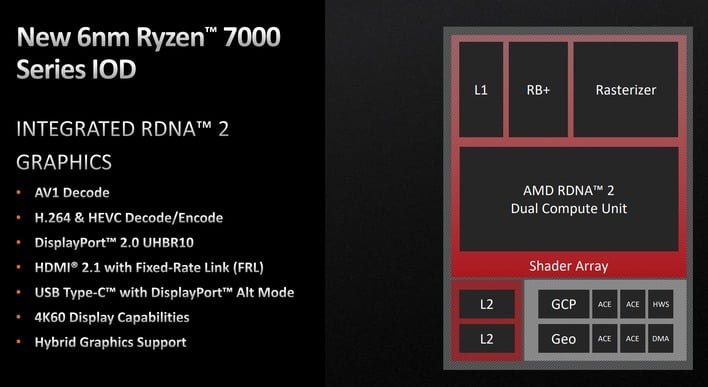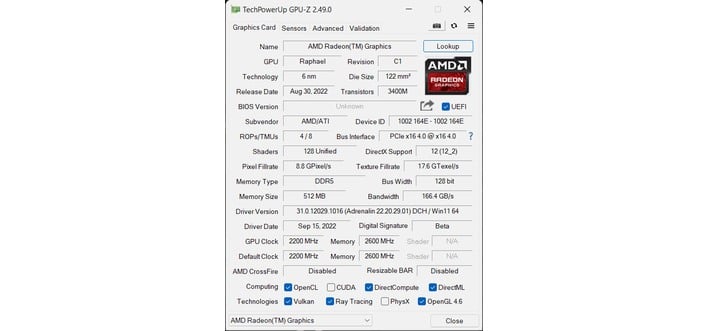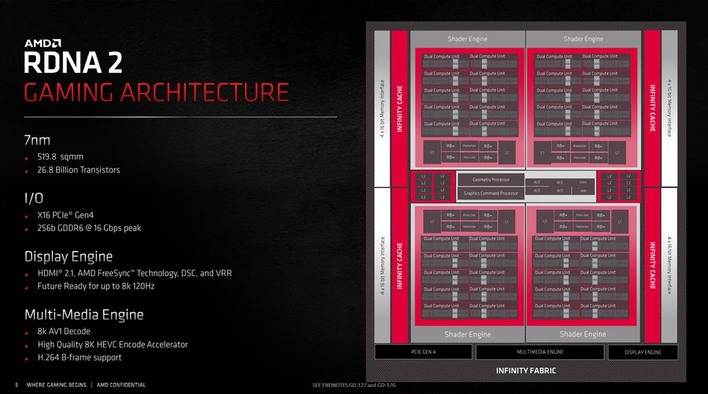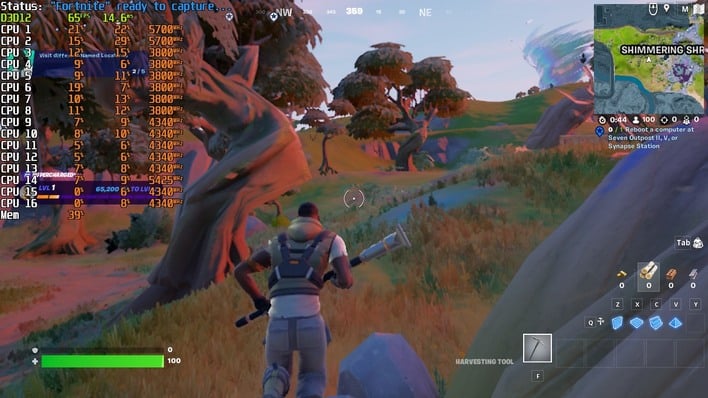It Won't Run Warzone, But AMD's Ryzen Zen 4 iGPU Can Power These Games With Ease
AMD specifically said that the integrated GPU is not for games, but simply for basic display support. It's based on the integrated graphics in the company's "Rembrandt" processors that make up the Ryzen 6000 mobile series, so it includes all the fancy features from that family, like AV1 video decode (not encode), HDMI 2.1 FRL support, and DisplayPort 2.0 support. It also could allow Zen 4 CPUs to support displays over Thunderbolt without needing awkward loopback connectors.
The tiny GPU can make up some of the hardware deficit with its high 2200 MHz clock rate, but we're still looking at pretty limited graphics performance. At least, "pretty limited" compared to other modern graphics processors. To put things in perspective, this integrated GPU has similar theoretical raster graphics performance to a Radeon HD 4850, HD 5670, or HD 7730. It's not far off of an R7 250. Sure, these are older and lower-end GPUs, but they played games just fine when they were new.
Raphael's integrated GPU is certainly brand-new, and you certainly can play some games on it, too. To be clear, even though it's based on the same RDNA 2 architecture as AMD's extant Radeon RX 6000 series GPUs, and though it supports the same DirectX 12_2 feature level, this GPU is not really up to the task of playing the latest and greatest AAA 3D titles, not even at low settings. It's just not powerful enough for titles like Watch Dogs: Legion or Call of Duty: Modern Warfare II. That doesn't mean it can't play games, though.
After all, we're PC gamers. We don't give up the previous generation of titles just because the next generation is out. Beloved older series like Unreal Tournament and Quake, Counter-Strike, Starcraft, The Elder Scrolls (including Skyrim), and thousands of other classic PC games should all run flawlessly on this integrated GPU. Likewise for tens of thousands of classic video games playable via emulators, of course—games from the 5th, 6th, and even 7th generation of game consoles should pose no problem thanks to the iGPU's modern driver support.



We tested the game at a variety of settings, starting with 1080p on the Medium preset. While some folks call a 30 FPS average "playable," we wouldn't—at least, not in a competitive title like Fortnite. Allowing the game to set its own "Recommended" settings took us down to 1600×900 resolution with a mix of custom settings, but dropping to 720p drastically improved our minimums and made the game ultimately quite playable, although we had to fall back to DirectX 11 as the DirectX 12 mode had considerably worse 1% lows that presented themselves as visible hitching.






